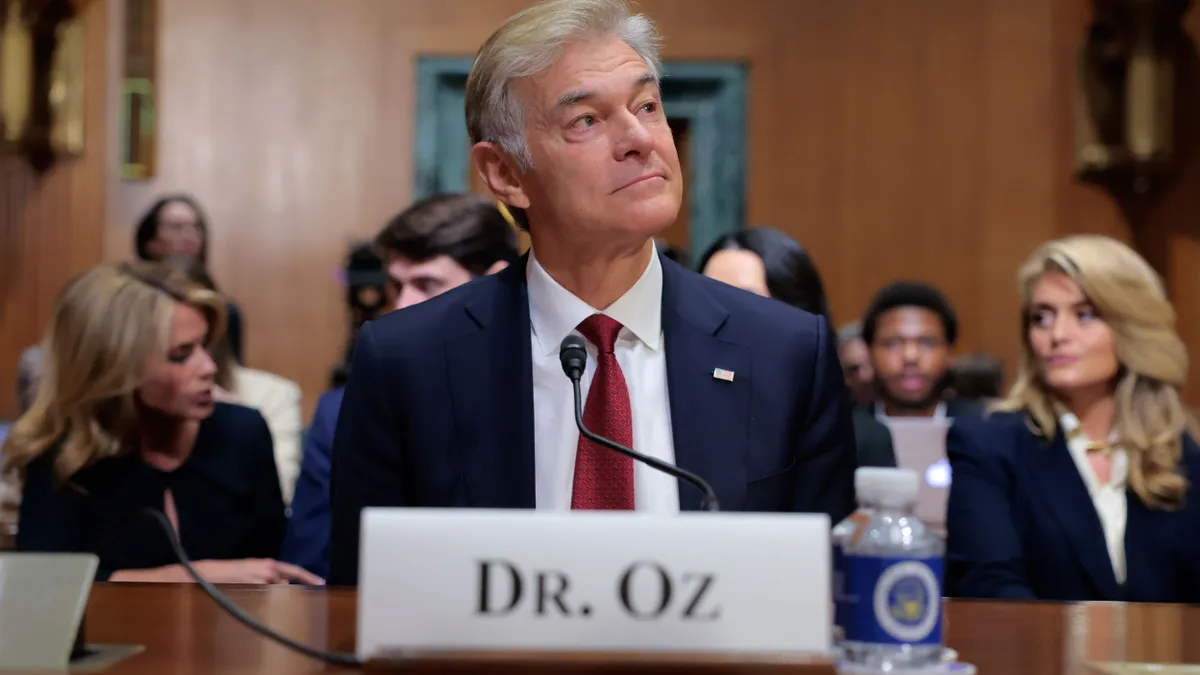Lawmakers missed a deadline to extend telehealth flexibilities in Medicare, disrupting virtual care reimbursement and access for beneficiaries across the country.
After Congress failed to reach a consensus on funding legislation, the federal government shut down at midnight on Wednesday. Democrats and Republicans had clashed for weeks on the deal, largely over whether to extend more generous financial assistance for people who buy insurance on the Affordable Care Act exchanges.
Both Republicans and Democrats had proposed spending packages that would have preserved the telehealth policies through Nov. 21 and Oct. 31, respectively, though the bills didn’t gain traction.
Without a spending plan, the telehealth coverage flexibilities lapsed on Oct. 1. The CMS said Wednesday that many restrictions previously in place for telehealth would resume, and that providers could choose to hold on submitting telehealth claims in the absence of congressional action. Additionally, authorization for the CMS’ Acute Hospital Care at Home program — another pandemic-era program that allows more than 400 facilities across 39 states to provide inpatient level care in patients homes — expired after lawmakers missed the deadline to avert a government shutdown.
The missed deadline was decried by telehealth groups, who have urged Congress to take action for weeks.
“Today, millions of seniors are waking up wondering if they will continue to have access to the clinicians they have relied upon for the past six years,” Chris Adamec, executive director of the Alliance for Connected Care, said in a statement Wednesday. “This uncertainty causes delayed care, will lead to adverse health outcomes, and increases operational costs for health organizations.”
ATA Action, the advocacy arm of the American Telemedicine Association, sent letters to President Donald Trump and congressional leaders Wednesday, urging them to reinstate the flexibilities and put in place retroactive reimbursement provisions for clinicians that offer virtual care during the lapse.
“Most providers and hospital systems are taking calculated risks to continue care during this time, but long-term continuity depends on action by our telehealth champions in Washington to restore these flexibilities and ensure retroactive reimbursement,” Kyle Zebley, executive director at ATA Action and senior vice president of public policy at the ATA, said in a statement.
The flexibilities were first put in place during the COVID-19 pandemic to preserve access to care as doctors and patients limited in-person contact. Before the public health emergency, coverage of telehealth in Medicare was largely restricted to beneficiaries living in rural areas or for certain types of facilities or services.
Some telehealth policy changes enacted in 2020 have been made permanent, but others — like eliminating geographic restrictions for virtual care or allowing telehealth for mental healthcare without requiring some in-person visits — still operate on temporary waivers.
Legislation to preserve the flexibilities has come down to the wire in recent months. Congress authorized a two-year extension at the end of 2022, but another long-term deal fell apart at the end of last year.
Instead Congress only extended the flexibilities through March. Another short-term government funding bill signed just weeks before that deadline kept the flexibilities in place for six more months.
Now, lawmakers have failed to meet the Sept. 30 deadline. The policies are popular with lawmakers on both sides of the aisle, so it’s likely they could be enacted again in later legislation — but even a limited lapse could create challenges for providers and patients, experts say.
“Even a short disruption is a disruption for patient care,” said Shelagh Foster, senior policy advisor at law firm Polsinelli. “Because at the end of the day, this is really all about the patients being able to access their care.”
Providers, telehealth advocates tire of telehealth cliff
Providers may be hesitant to invest in telehealth programs when the federal government frequently comes close to — or, in this case, completely misses — deadlines on virtual care reimbursement, experts say.
“To have this, ‘Let’s figure out another seven weeks. What’s going to happen in seven weeks and one day?’ It’s just completely disruptive to everyone,” said Tom Leary, senior vice president and head of government relations at HIMSS. “So it’s time to just have a clear policy decision.”
Planning for missed deadlines also takes up resources. For example, some providers have built contingency plans as Congress gets close to flexibilities expiring, like planning to send nurses to patients’ homes in case telehealth is no longer in the cards, said Igor Gorlach, partner at law firm King & Spalding.
They might also collaborate with other nearby brick and mortar providers to ensure patients have an alternative care site to go to, and send out advance notices to let patients know their telehealth services might not be covered, he said.
For now, providers will have to talk through the risks of providing telehealth services during the government shutdown, in case Congress doesn’t later authorize backdated reimbursement for these services, Leary said. Health systems should also keep an eye on the CMS for guidance, he added.
Ultimately the CMS likely won’t be able to reimburse providers without congressional authority, Gorlach said.
“And so if they say, ‘Hey, continue submitting the claims and we’ll see, maybe we’ll have the authority to pay you.’ I guess that’ll be one approach,” he said. “But then, as a provider, you have to basically rely on or hope that the claims you’re submitting will eventually get paid.”























